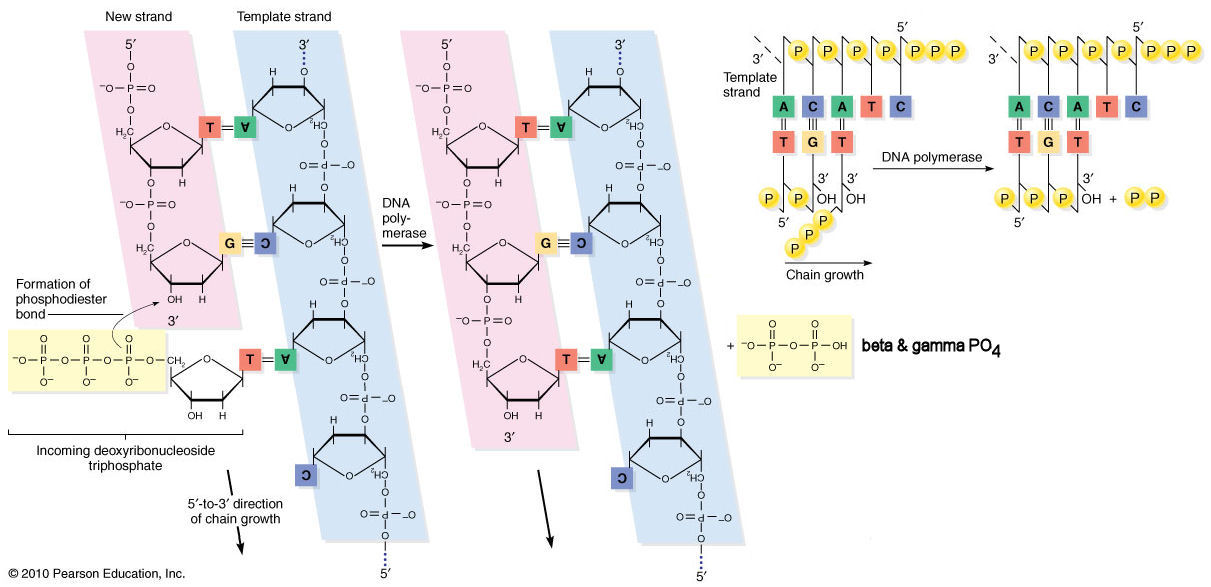
DNA synthesis in the 5'
The
upper diagram shows a di-nucleotide (in pink), with a tri-phosphate
group attached to the 5' carbon of the first (upper)
nucleotide, a 3'  5' phosphodiester bond
linking the 3' carbon of the upper T nucleotide to the 5'
carbon of the lower G nucleotide,
and an exposed 3' carbon with an attached -OH
group on the second (lower) nucleotide. Addition of the
third (T) nucleotide
onto the 3' bottom end of the second
nucleotide requires clipping of the outer two PO4
groups and formation of a new 3'
5' phosphodiester bond
linking the 3' carbon of the upper T nucleotide to the 5'
carbon of the lower G nucleotide,
and an exposed 3' carbon with an attached -OH
group on the second (lower) nucleotide. Addition of the
third (T) nucleotide
onto the 3' bottom end of the second
nucleotide requires clipping of the outer two PO4
groups and formation of a new 3'  5' phosphodiester bond. The original 5' end on the first
nucleotide remains unmodified, and the new 3'
end is from the newly-added third nucleotide, as shown in
the middle diagram. The process is shown schematically at
right.
5' phosphodiester bond. The original 5' end on the first
nucleotide remains unmodified, and the new 3'
end is from the newly-added third nucleotide, as shown in
the middle diagram. The process is shown schematically at
right.
Polynucleotides thus "grow" from an unchanging 5' end by successive addition of nucleotides at the 3' end. We define this as growing in the 5' 3' direction.
Do NOT attempt to think about the
process any other way.
3' direction.
Do NOT attempt to think about the
process any other way.
Polynucleotides thus "grow" from an unchanging 5' end by successive addition of nucleotides at the 3' end. We define this as growing in the 5'
Nucleic acid synthesis
processes occur only in the 5' 3' direction.
3' direction.